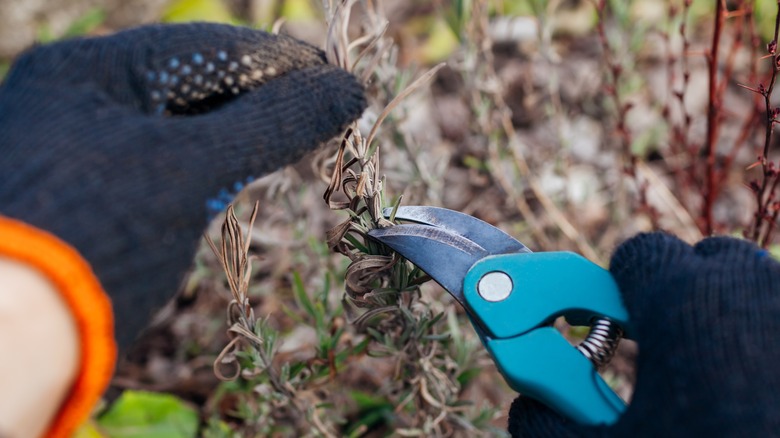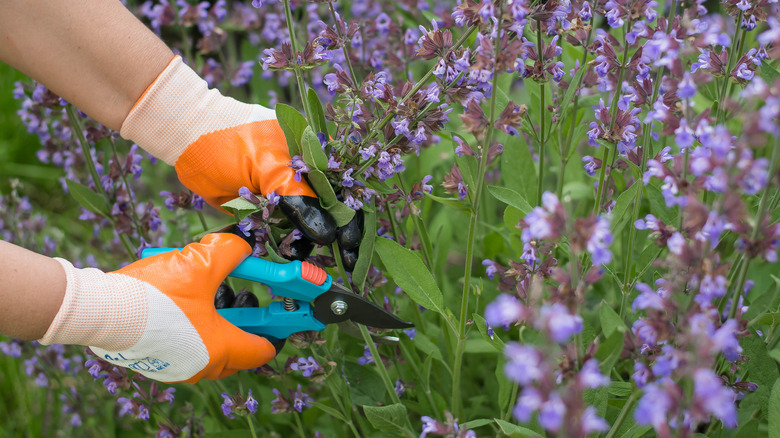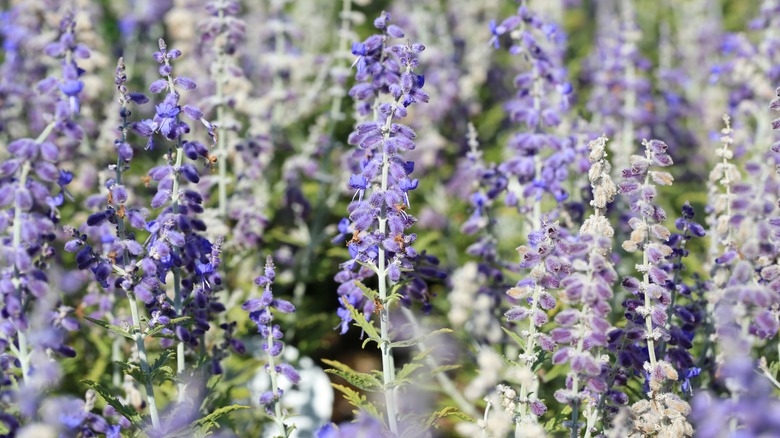Pruning Russian Sage In Spring Is Easy With These Helpful Tips
A dramatic and drought-tolerant favorite for gardens, Russian sage (Perovskia atriplicifolia) is a low-maintenance, powerhouse perennial with beautiful airy lavender flowers and a minty scent. With an ability to adapt to less-than-ideal conditions and resistance to pests, Russian sage is a great choice for many gardens. It blooms from mid-summer to fall and attracts many pollinators. While Russian sage is low maintenance, but regular pruning and light trimming can help it maintain its vigor and bloom more fully. Pruning also keeps your plant strong, encourages flower production, and can revitalize old plants.
Pruning Russian sage in early spring can help it grow robustly throughout the season. Cutting stems back to 12 to 18 inches on old wood is the best way to keep them from looking leggy and overgrown, and it will encourage new growth. Pruning Russian sage right after it blooms can potentially sprout a second bloom. These easy pruning tips can help breathe new life into your Russian sage this spring.
Why you should prune Russian sage
Russian sage flowers grow on new wood, so rejuvenation pruning is straightforward. During early spring, the plant comes out of dormancy, and its new and old growth is easily distinguishable. This means you can prune the previous year's old growth without risking cutting off new buds that turn into the current year's flowers. New growth emerges from the crown of the plant and its stems and typically looks light in color, fresh, and green. In contrast, the old growth looks woodier, grey, established, and somewhat spent.
Rejuvenation pruning removes the old wood and prevents the plant from expending energy on areas that won't produce blooms. Instead, its energy is redirected into new shoots where flowers develop. Additionally, removing the old wood allows for more air, sunlight, and resources to reach the plant. Opening up more space encourages Russian sage to grow more densely, prevents diseases, and contributes to a healthier and better-looking plant for your garden.
How to prune Russian sage
Although you can prune in the fall, it is better to leave the plant over winter with the old growth, which can help insulate the plant. Spring is the ideal time to prune, and you should do so when the first signs of new growth appear. You can either hard prune or selectively prune.
Hard pruning is when you cut the plant back to right above the ground, roughly 6 inches. This encourages it to produce new shoots and creates a dense, controlled growth. Another option is to selectively prune by cutting off the old stems above where new growth is starting. This is the best method if you just want to clean your plant up or if it needs a little boost. Wherever you see buds on the stems is where the new growth starts. Anything above this point is considered dead wood and won't produce new buds. This strategic method allows for precise shaping and control over where you cut.
Whatever you do, be careful not to over-prune. Over-pruning can permanently injure your plant and expose it to excess sunlight and disease, which can eventually lead to plant death. Be precise with your pruning in the spring and watch your Russian sage burst with color.


